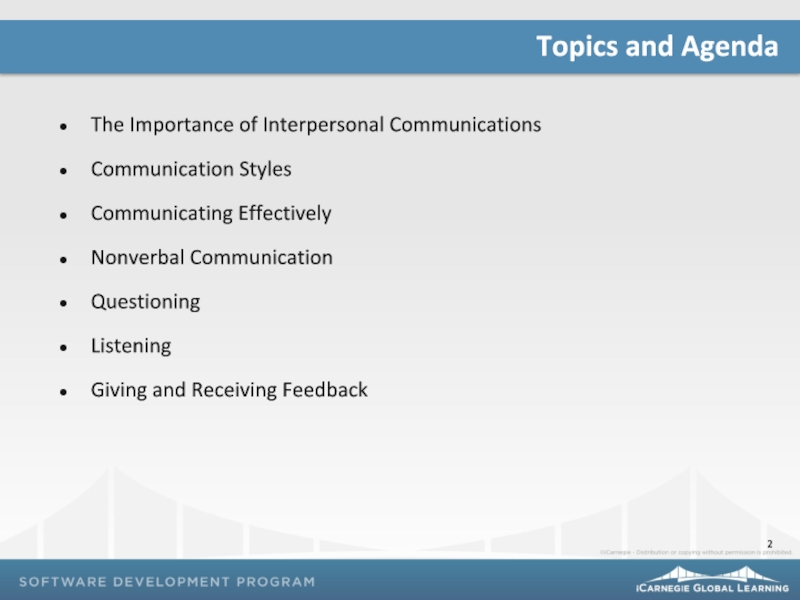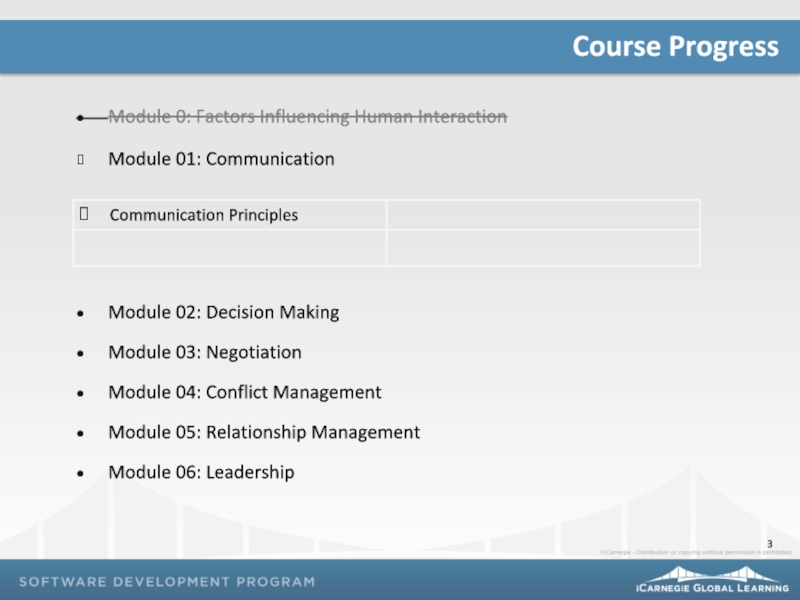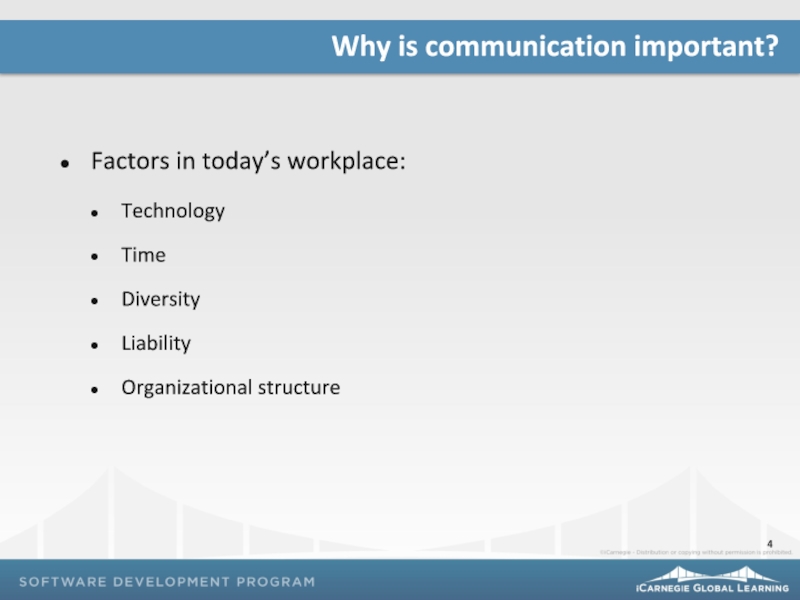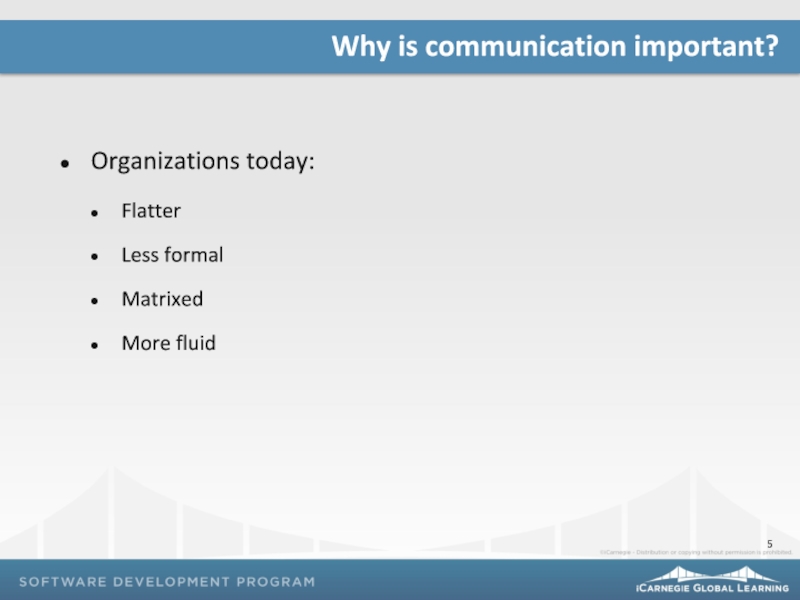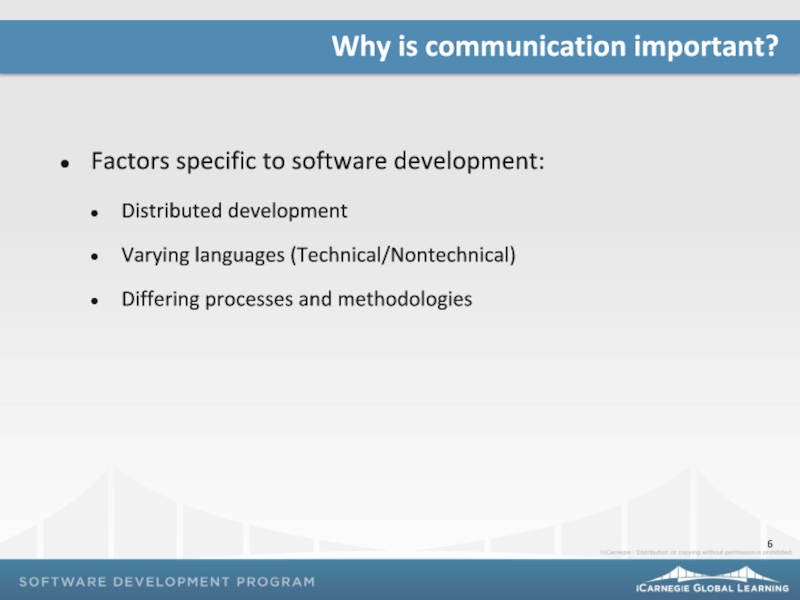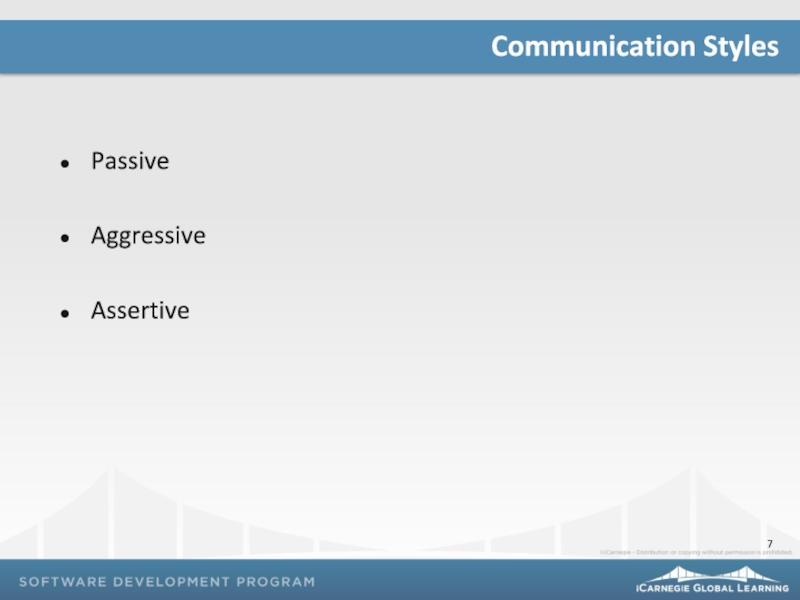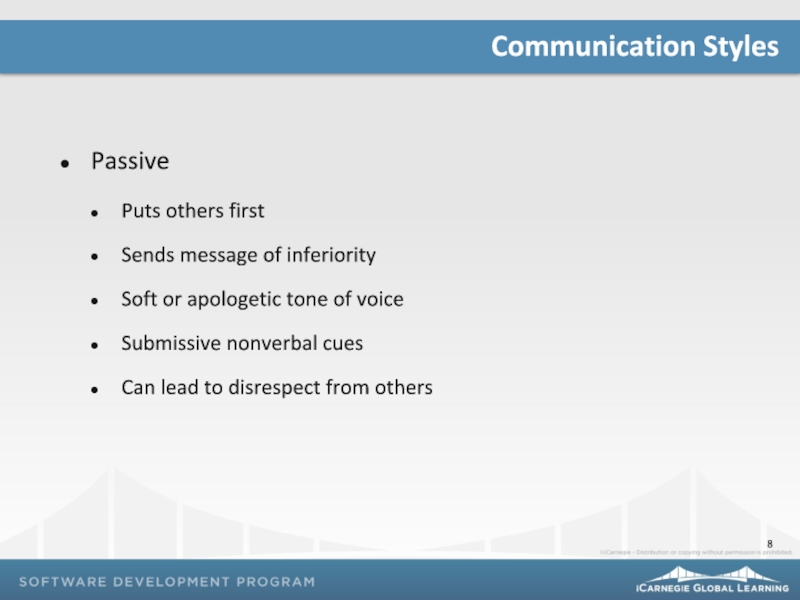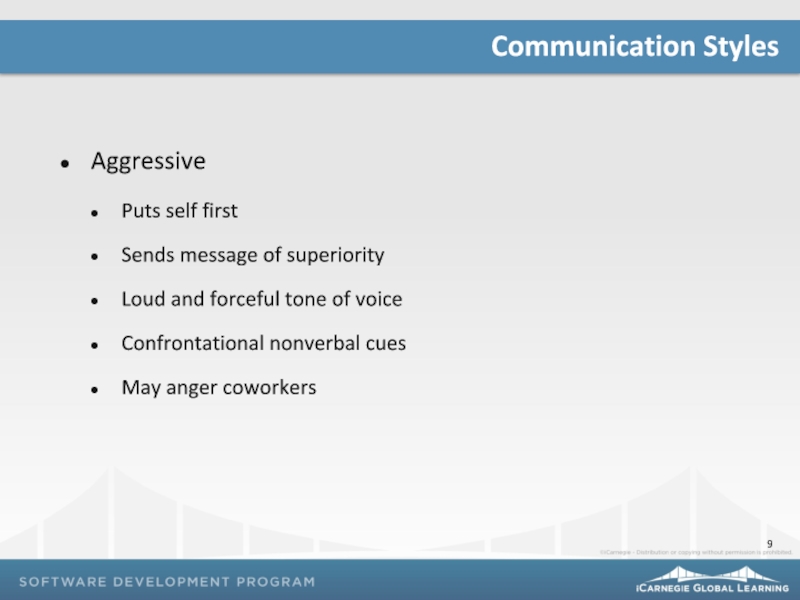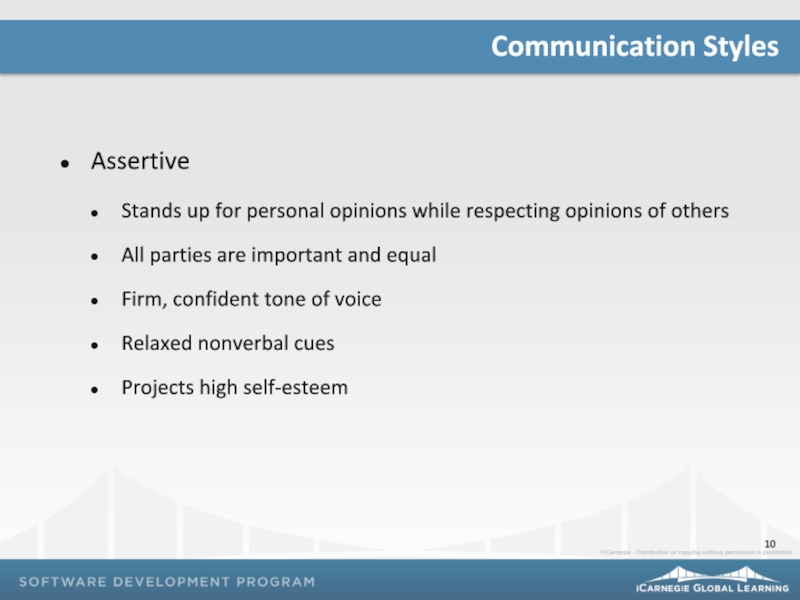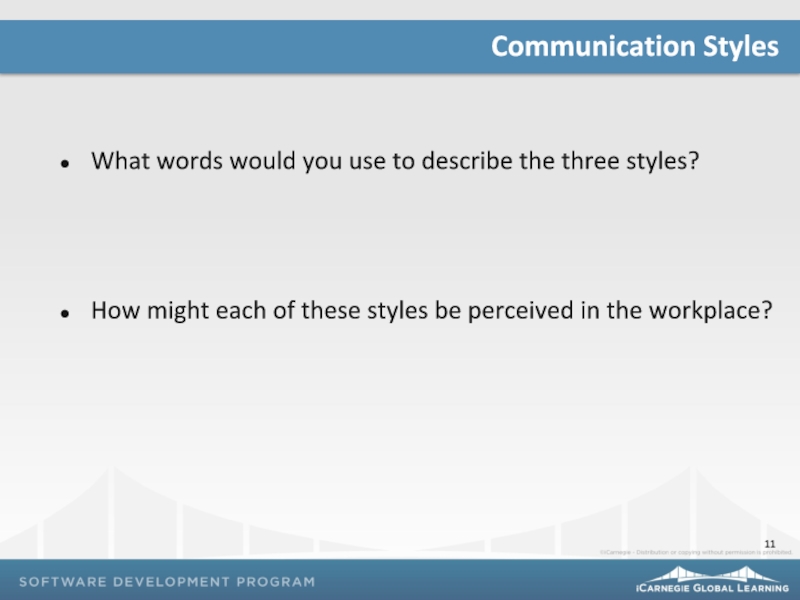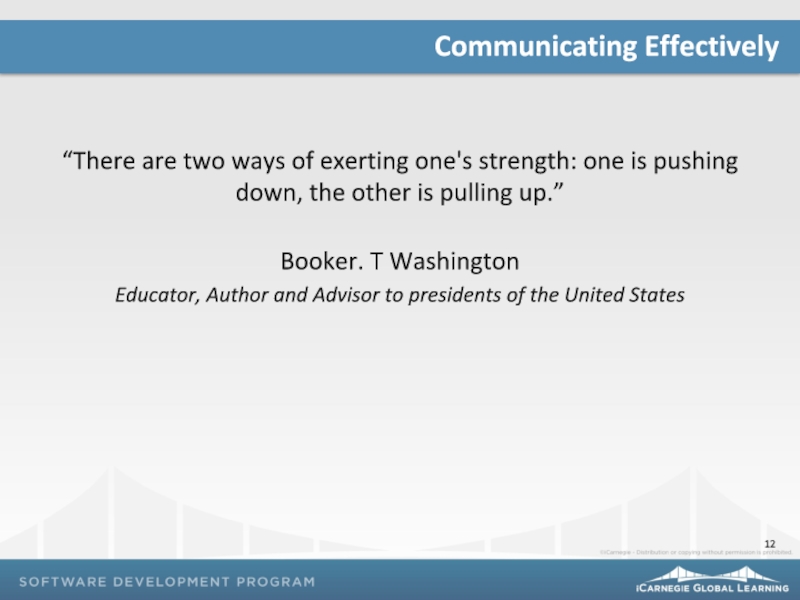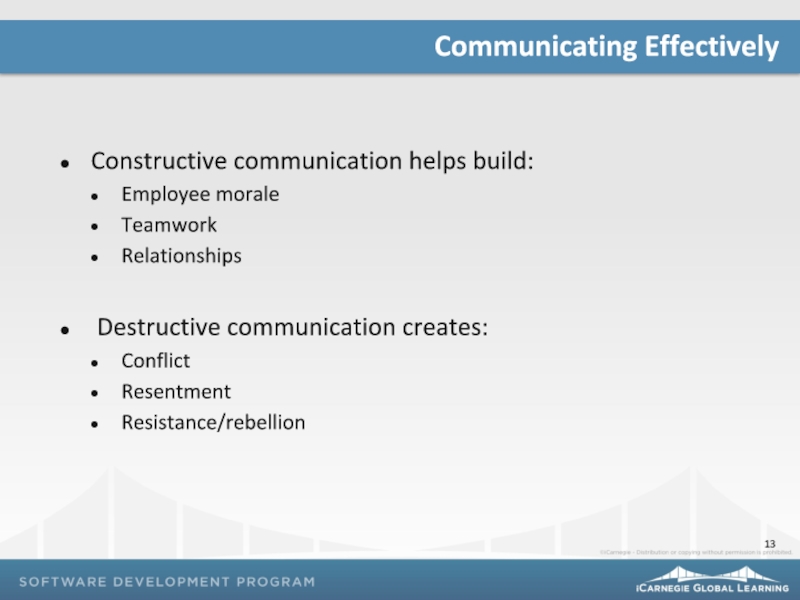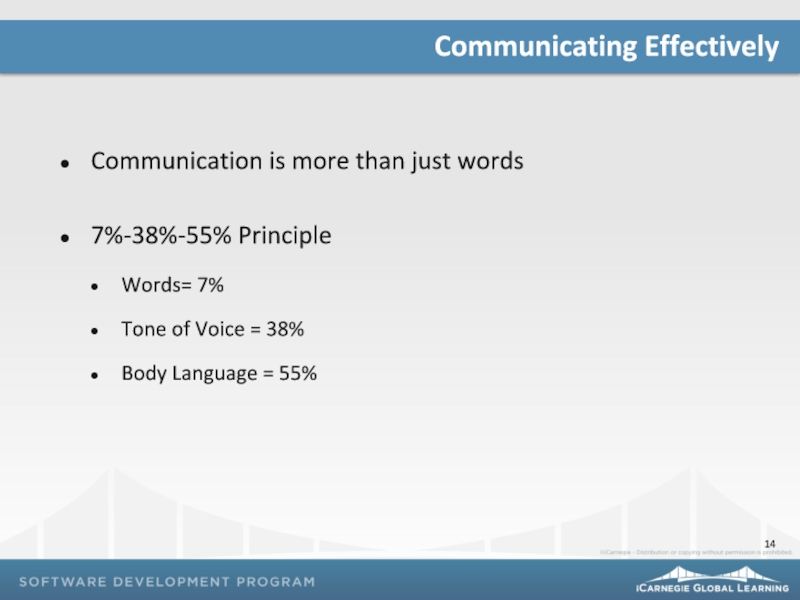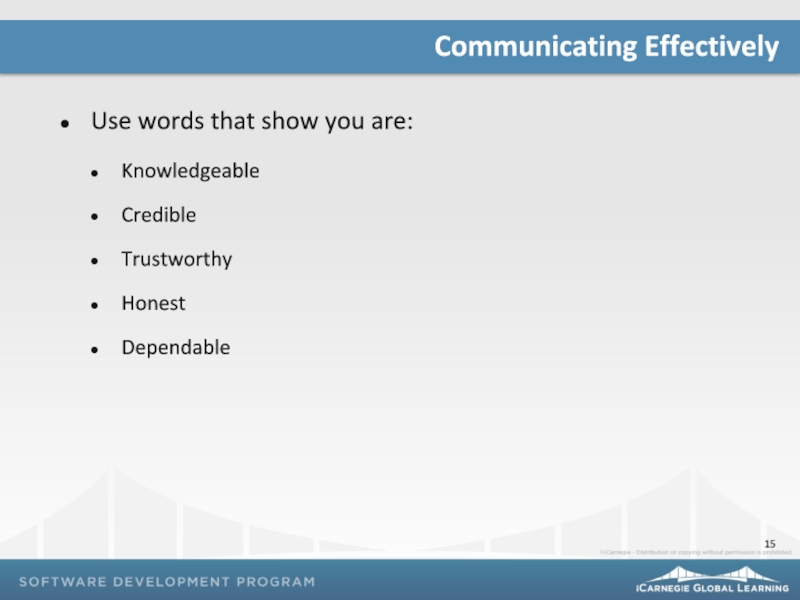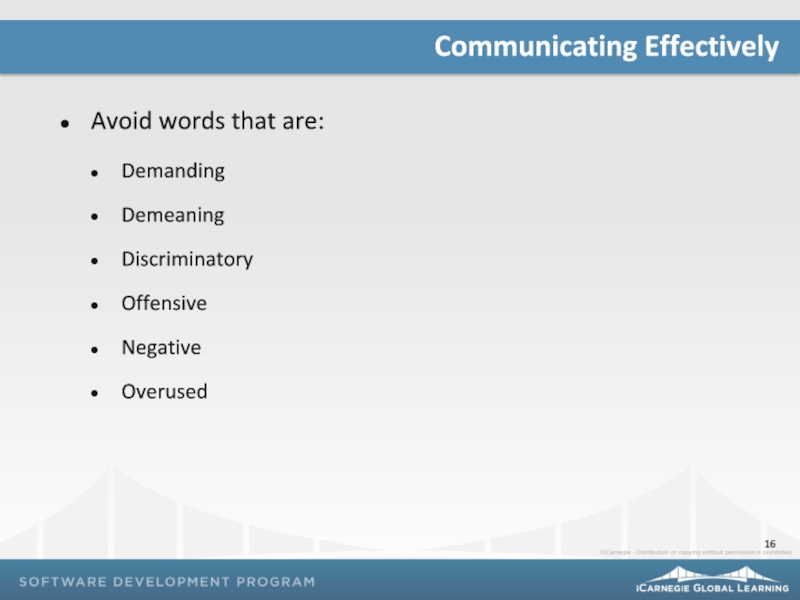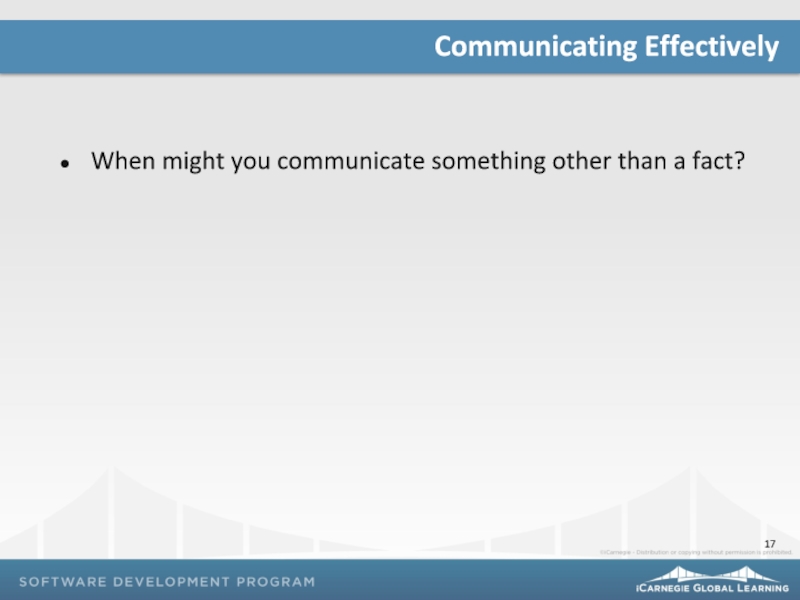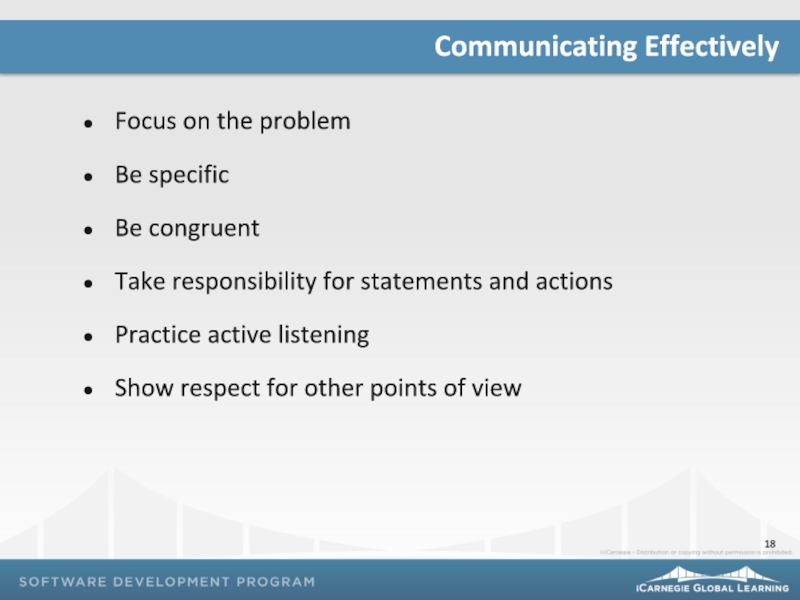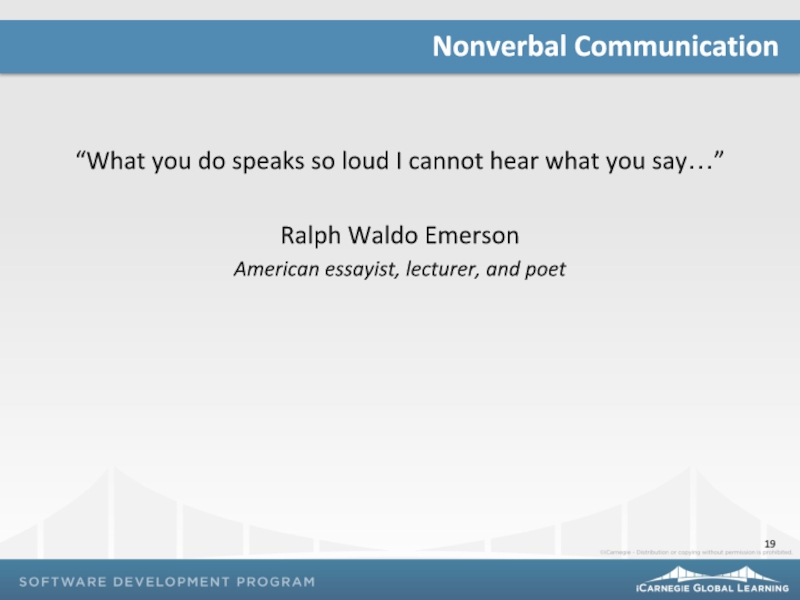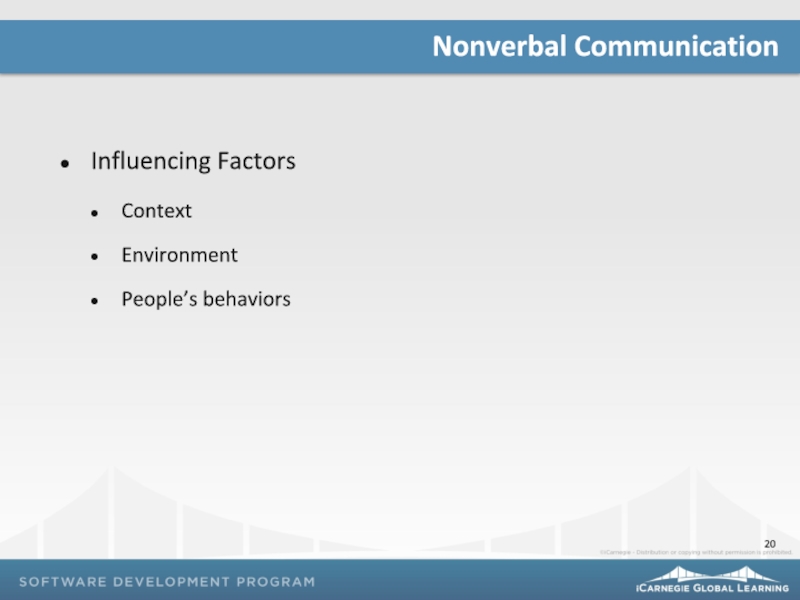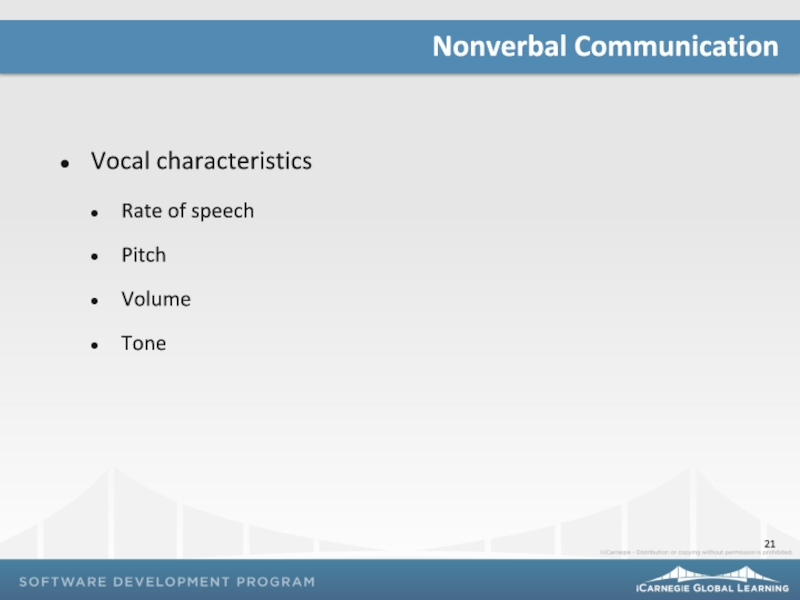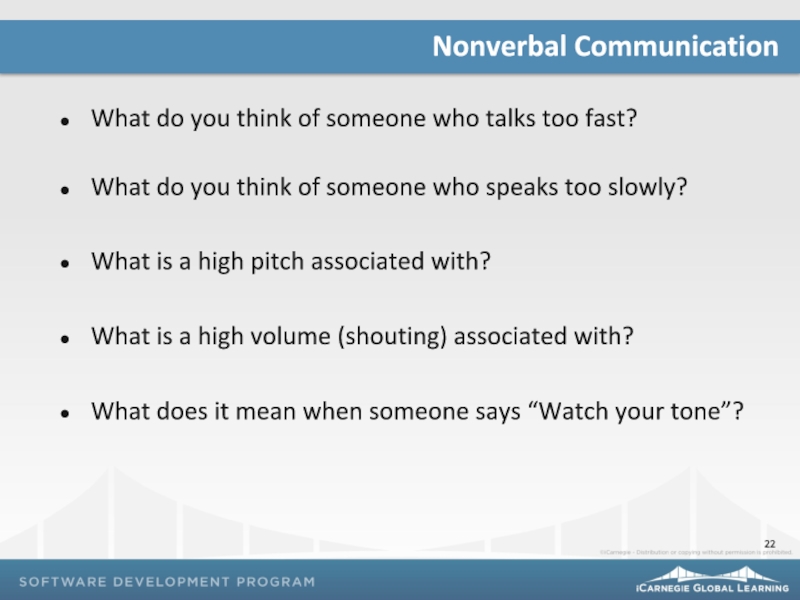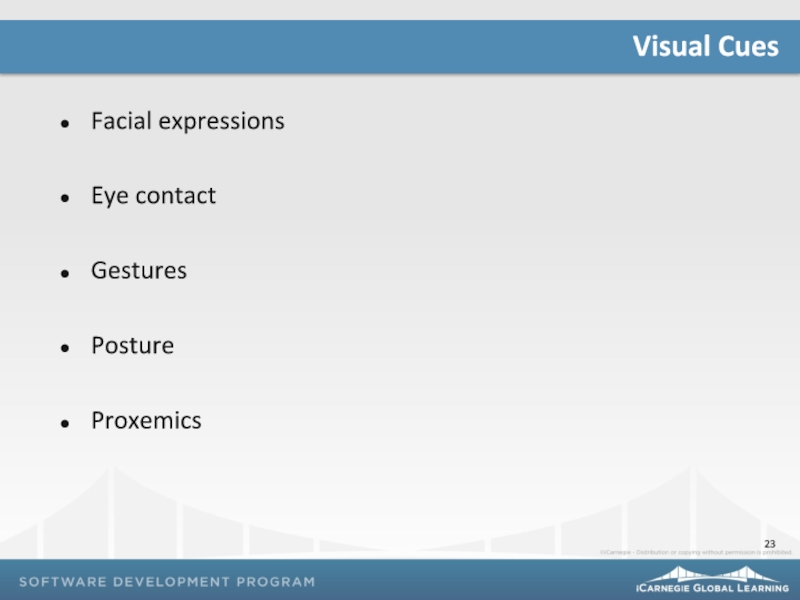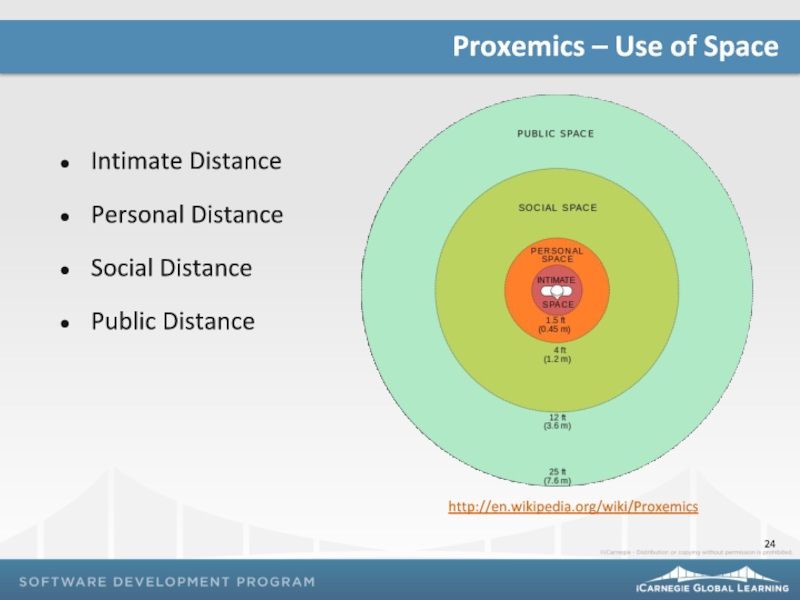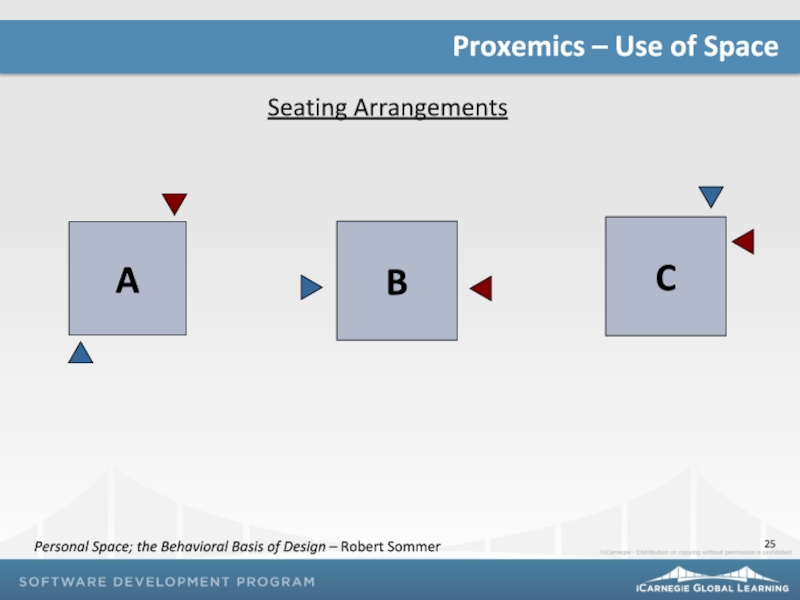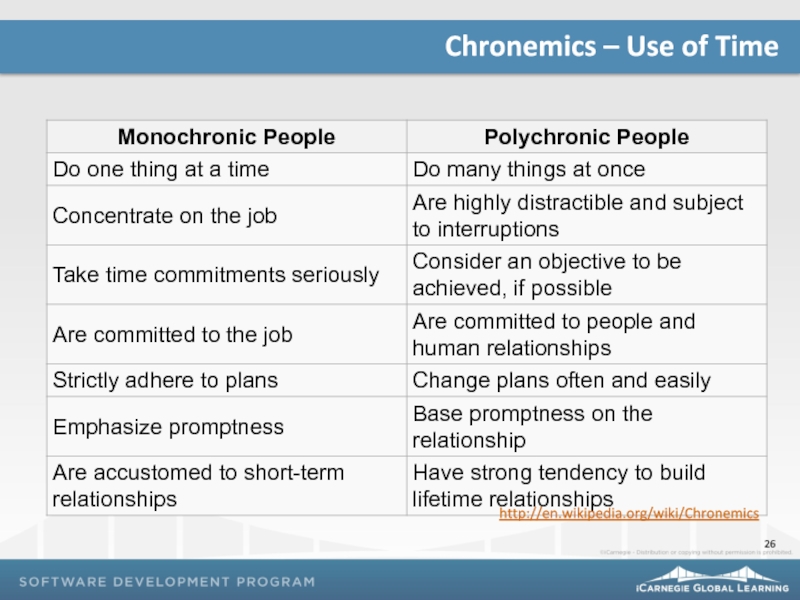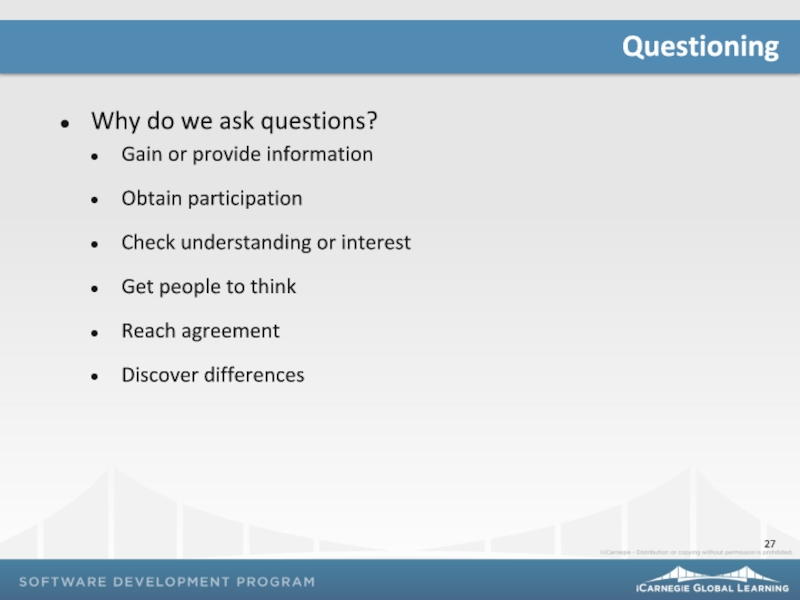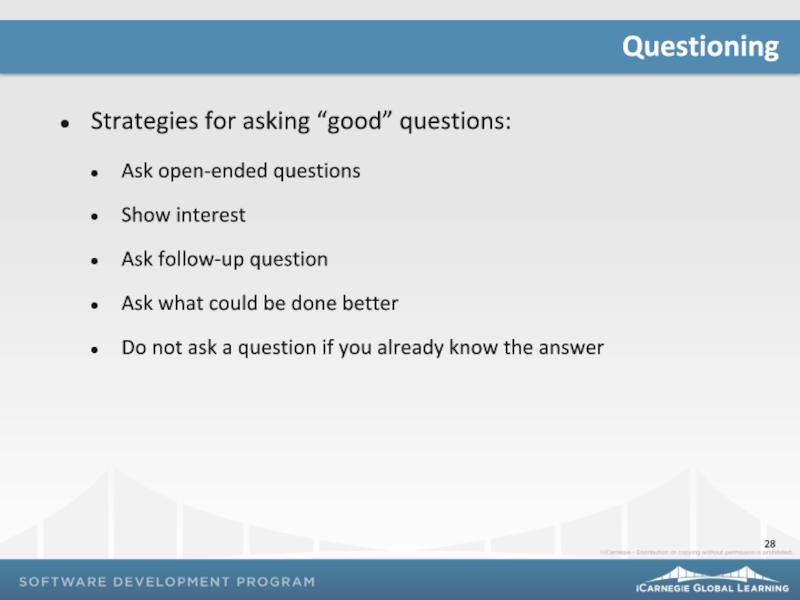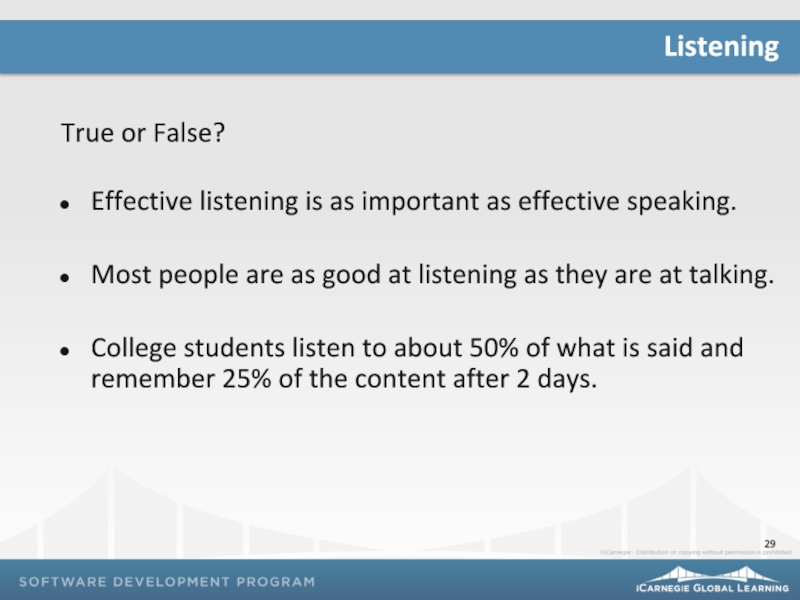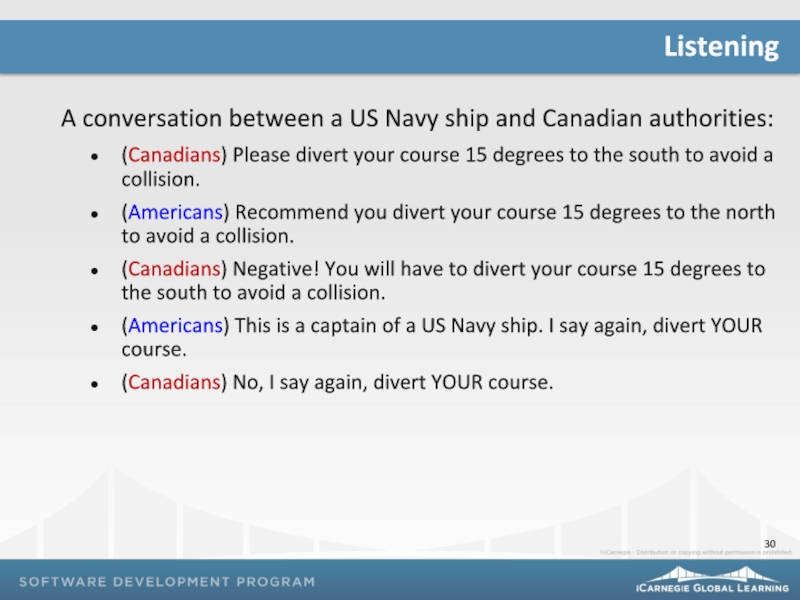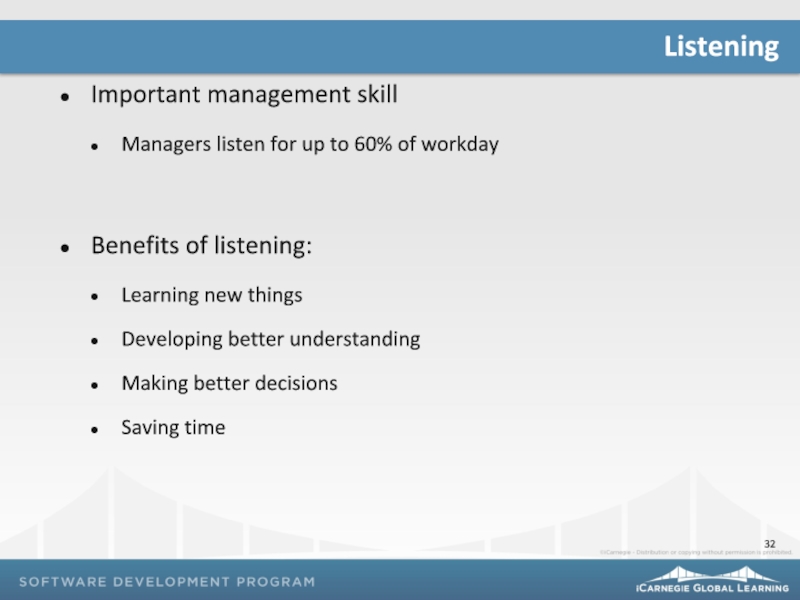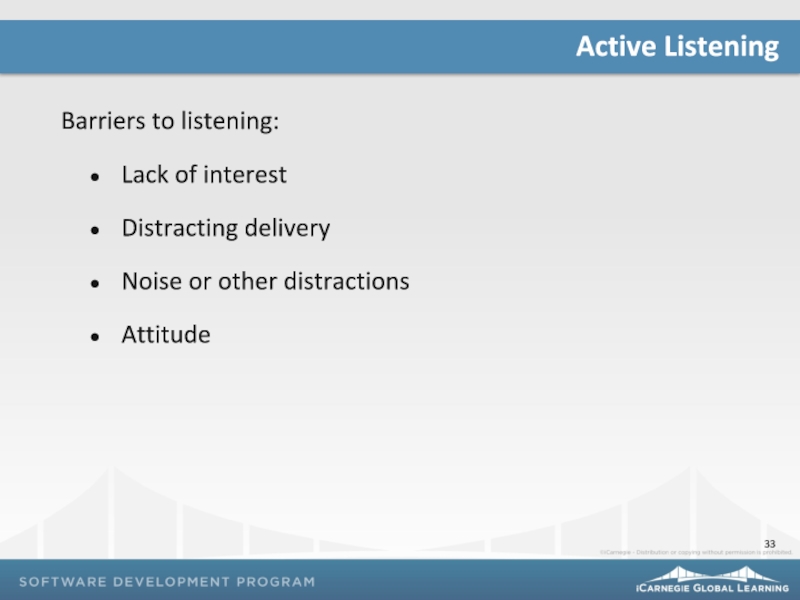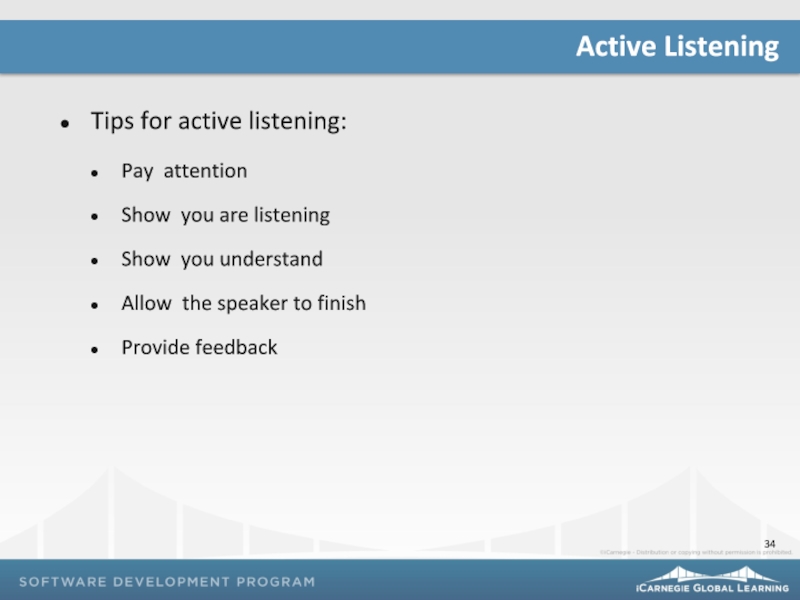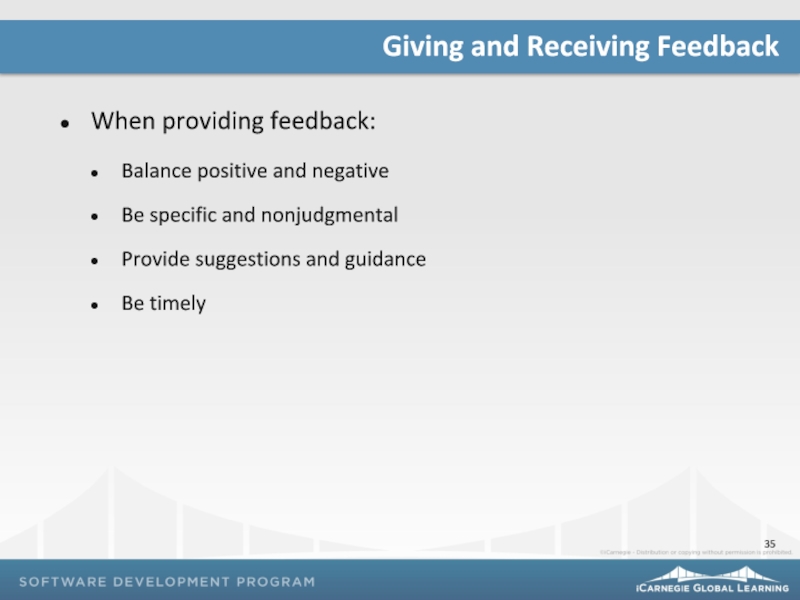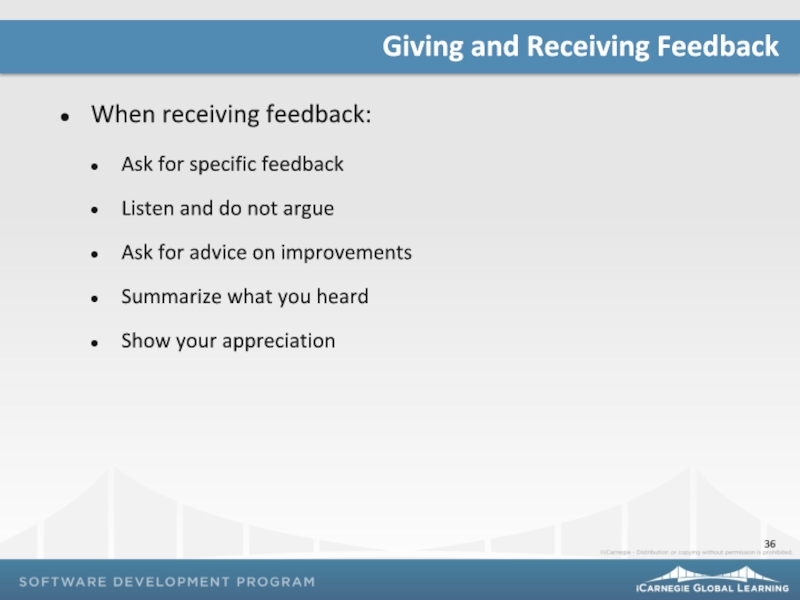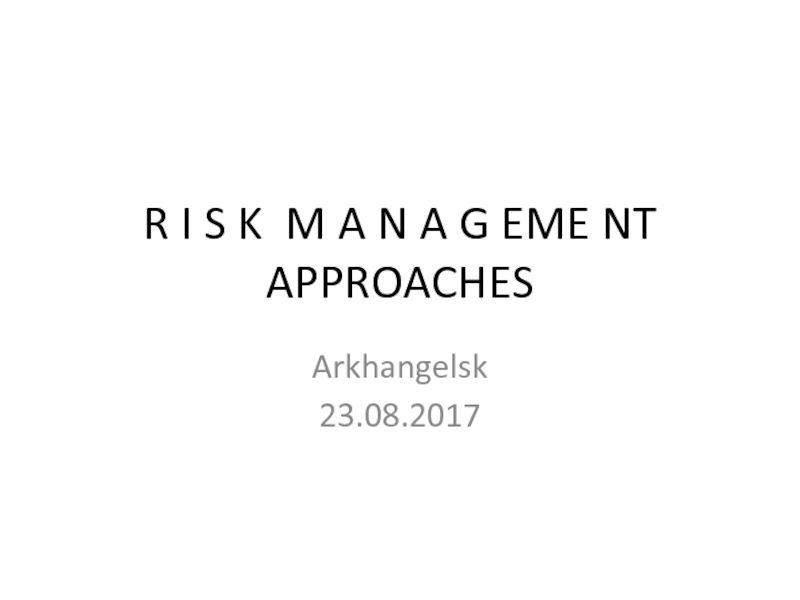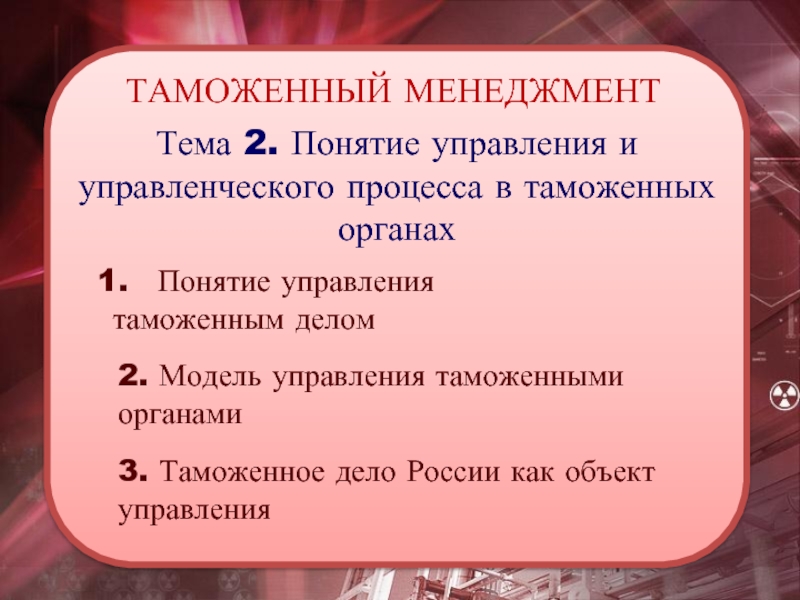- Главная
- Разное
- Дизайн
- Бизнес и предпринимательство
- Аналитика
- Образование
- Развлечения
- Красота и здоровье
- Финансы
- Государство
- Путешествия
- Спорт
- Недвижимость
- Армия
- Графика
- Культурология
- Еда и кулинария
- Лингвистика
- Английский язык
- Астрономия
- Алгебра
- Биология
- География
- Детские презентации
- Информатика
- История
- Литература
- Маркетинг
- Математика
- Медицина
- Менеджмент
- Музыка
- МХК
- Немецкий язык
- ОБЖ
- Обществознание
- Окружающий мир
- Педагогика
- Русский язык
- Технология
- Физика
- Философия
- Химия
- Шаблоны, картинки для презентаций
- Экология
- Экономика
- Юриспруденция
Communication principles презентация
Содержание
- 1. Communication principles
- 2. The Importance of Interpersonal Communications Communication
- 3. Course Progress Module 0: Factors Influencing
- 4. Factors in today’s workplace: Technology
- 5. Organizations today: Flatter Less formal Matrixed More fluid Why is communication important?
- 6. Factors specific to software development:
- 7. Passive Aggressive Assertive Communication Styles
- 8. Passive Puts others first Sends message
- 9. Aggressive Puts self first
- 10. Assertive Stands up for personal
- 11. What words would you use to
- 12. “There are two ways of exerting
- 13. Constructive communication helps build: Employee morale
- 14. Communication is more than just words
- 15. Use words that show you are:
- 16. Avoid words that are: Demanding Demeaning
- 17. When might you communicate something other than a fact? Communicating Effectively
- 18. Focus on the problem Be specific
- 19. “What you do speaks so loud
- 20. Influencing Factors Context Environment People’s behaviors Nonverbal Communication
- 21. Vocal characteristics Rate of speech Pitch Volume Tone Nonverbal Communication
- 22. What do you think of someone
- 23. Facial expressions Eye contact
- 24. Intimate Distance Personal Distance
- 25. Proxemics – Use of Space Seating
- 26. Chronemics – Use of Time http://en.wikipedia.org/wiki/Chronemics
- 27. Why do we ask questions? Gain
- 28. Strategies for asking “good” questions: Ask
- 29. True or False? Effective listening
- 30. A conversation between a US Navy
- 31. (Americans) This is the aircraft carrier
- 32. Important management skill Managers listen
- 33. Barriers to listening: Lack of
- 34. Tips for active listening: Pay attention
- 35. When providing feedback: Balance positive and
- 36. When receiving feedback: Ask for specific
Слайд 2
The Importance of Interpersonal Communications
Communication Styles
Communicating Effectively
Nonverbal Communication
Questioning
Listening
Giving and Receiving
Topics and Agenda
Слайд 3
Course Progress
Module 0: Factors Influencing Human Interaction
Module 01: Communication
Module
Module 03: Negotiation
Module 04: Conflict Management
Module 05: Relationship Management
Module 06: Leadership
Слайд 4
Factors in today’s workplace:
Technology
Time
Diversity
Liability
Organizational structure
Why is communication important?
Слайд 6
Factors specific to software development:
Distributed development
Varying languages (Technical/Nontechnical)
Differing processes and
Why is communication important?
Слайд 8
Passive
Puts others first
Sends message of inferiority
Soft or apologetic tone of
Submissive nonverbal cues
Can lead to disrespect from others
Communication Styles
Слайд 9
Aggressive
Puts self first
Sends message of superiority
Loud and forceful
Confrontational nonverbal cues
May anger coworkers
Communication Styles
Слайд 10
Assertive
Stands up for personal opinions while respecting opinions of others
All
Firm, confident tone of voice
Relaxed nonverbal cues
Projects high self-esteem
Communication Styles
Слайд 11
What words would you use to describe the three styles?
How might
Communication Styles
Слайд 12
“There are two ways of exerting one's strength: one is pushing
Booker. T Washington
Educator, Author and Advisor to presidents of the United States
Communicating Effectively
Слайд 13
Constructive communication helps build:
Employee morale
Teamwork
Relationships
Destructive communication creates:
Conflict
Resentment
Resistance/rebellion
Communicating Effectively
Слайд 14
Communication is more than just words
7%-38%-55% Principle
Words= 7%
Tone of Voice
Body Language = 55%
Communicating Effectively
Слайд 15
Use words that show you are:
Knowledgeable
Credible
Trustworthy
Honest
Dependable
Communicating Effectively
Слайд 16
Avoid words that are:
Demanding
Demeaning
Discriminatory
Offensive
Negative
Overused
Communicating Effectively
Слайд 18
Focus on the problem
Be specific
Be congruent
Take responsibility for statements
Practice active listening
Show respect for other points of view
Communicating Effectively
Слайд 19
“What you do speaks so loud I cannot hear what you
Ralph Waldo Emerson
American essayist, lecturer, and poet
Nonverbal Communication
Слайд 22
What do you think of someone who talks too fast?
What do
What is a high pitch associated with?
What is a high volume (shouting) associated with?
What does it mean when someone says “Watch your tone”?
Nonverbal Communication
Слайд 24
Intimate Distance
Personal Distance
Social Distance
Public Distance
Proxemics – Use
http://en.wikipedia.org/wiki/Proxemics
Слайд 25
Proxemics – Use of Space
Seating Arrangements
Personal Space; the Behavioral Basis
Слайд 27
Why do we ask questions?
Gain or provide information
Obtain participation
Check understanding
Get people to think
Reach agreement
Discover differences
Questioning
Слайд 28
Strategies for asking “good” questions:
Ask open-ended questions
Show interest
Ask follow-up question
Ask what
Do not ask a question if you already know the answer
Questioning
Слайд 29
True or False?
Effective listening is as important as effective speaking.
Most people
College students listen to about 50% of what is said and remember 25% of the content after 2 days.
Listening
Слайд 30
A conversation between a US Navy ship and Canadian authorities:
(Canadians) Please
(Americans) Recommend you divert your course 15 degrees to the north to avoid a collision.
(Canadians) Negative! You will have to divert your course 15 degrees to the south to avoid a collision.
(Americans) This is a captain of a US Navy ship. I say again, divert YOUR course.
(Canadians) No, I say again, divert YOUR course.
Listening
Слайд 31
(Americans) This is the aircraft carrier USS Lincoln, the second largest
(Canadians) This is a lighthouse. Your call.
Listening
Слайд 32
Important management skill
Managers listen for up to 60% of workday
Benefits of listening:
Learning new things
Developing better understanding
Making better decisions
Saving time
Listening
Слайд 33
Barriers to listening:
Lack of interest
Distracting delivery
Noise or other
Attitude
Active Listening
Слайд 34
Tips for active listening:
Pay attention
Show you are listening
Show you understand
Allow the speaker to finish
Provide feedback
Active Listening
Слайд 35
When providing feedback:
Balance positive and negative
Be specific and nonjudgmental
Provide
Be timely
Giving and Receiving Feedback
Слайд 36
When receiving feedback:
Ask for specific feedback
Listen and do not argue
Ask
Summarize what you heard
Show your appreciation
Giving and Receiving Feedback

